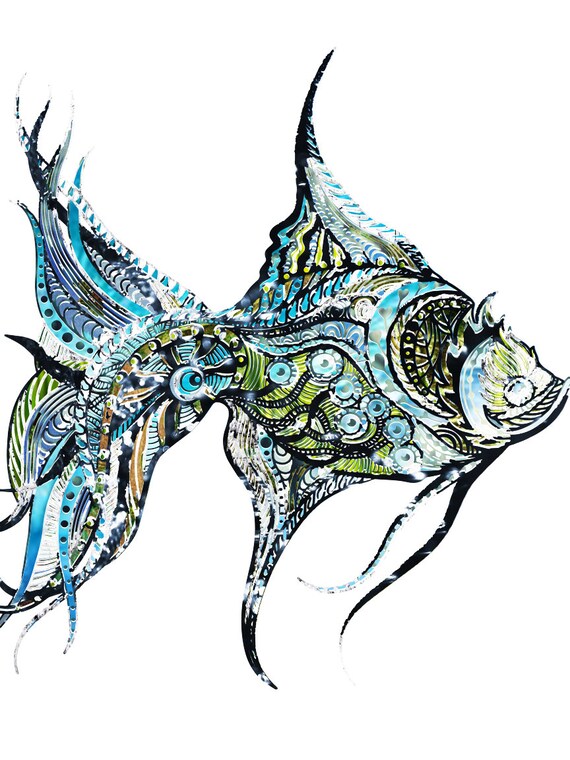

Depending on the fish, the eyes, scales, gills and fins should be distinctly outlined, creating an artsy representation of a local fish. Once it is dry, you will have a simple, yet beautiful, ink print of a fish. Hold for 30 seconds.Ĥ) Carefully lift the fish from the piece of paper without sliding the fish across the paper to avoid smearing the print.Ħ) If you wish, add the common name and/or scientific name of the fish beneath the print using markers, colored pencil or a calligraphy pen. Firmly press down on the fish to transfer the ink to the paper. The following are step-by-step instructions for making a fish print.ġ) Spread a small layer of ink (any color) onto a plastic tray that is big enough area to hold the fishĢ) Place one side of the fish into the ink, covering the entire side of the fish with ink.ģ) Remove the fish from the ink, and place the fish on a piece of white paper. Make sure that students are wearing smocks or clothes that are not going to get ruined if ink gets on them. Be sure that your work area has a plastic table cloth, or is a surface that can be easily cleaned. Once your students are engaged in thinking about fish, it is time to start the art project. What kinds of important body parts do fish have? What kinds of fish live in the local rivers/lakes? Consider asking them the following questions: You can introduce this lesson by activating your students prior knowledge about fish. Paper (size depends on fish) Introduction

Print ink (available at arts and crafts stores) Materials: Fresh dead fish of any species/size (from the grocery store, local bait shop, or a local river or lake if you happen to enjoy fishing!) Read an age appropriate book with your class on fish and then participate in this fun project!ĭiscipline: Art, with possible extended lesson on basic fish anatomy

This fish craft is simple to do, yet creates a great finished product.


 0 kommentar(er)
0 kommentar(er)
